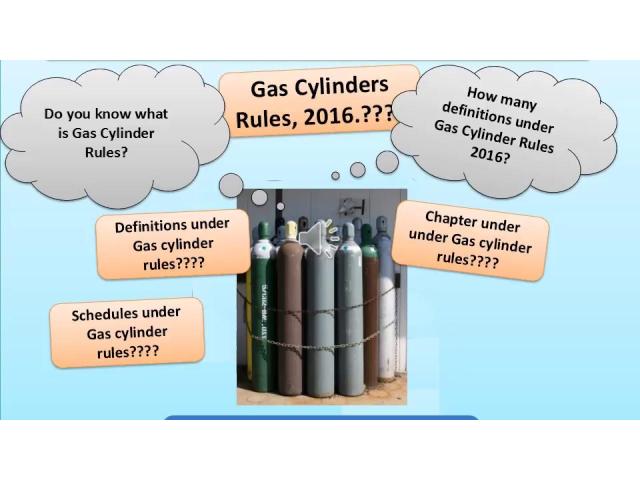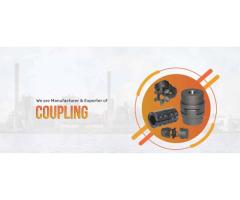Gas Cylinder Rules are regulations that govern the safe handling, transportation, storage, and use of gas cylinders. These rules are designed to prevent accidents, injuries, and environmental damage caused by the improper use of gas cylinders, which often contain gases under high pressure. Below are the key components of the Gas Cylinder Rules:
1. Cylinder Design and Construction
Gas cylinders must be constructed with durable, high-quality materials that can withstand high pressure.
Each cylinder should have the manufacturer’s identification, serial number, and the maximum permissible pressure (in bar or psi) stamped on it.
Safety features, such as pressure-relief devices, must be included to release excess pressure safely in case of emergency.
2. Proper Labeling and Marking
Cylinders must be clearly labeled with the type of gas they contain (e.g., oxygen, nitrogen, LPG) and appropriate hazard symbols (flammable, toxic, etc.).
Labels should also include handling and storage instructions.
The color coding on cylinders helps identify the type of gas for quick and easy recognition.
3. Storage Guidelines
Cylinders should be stored in well-ventilated, cool areas away from direct sunlight, sources of heat, flames, or electrical circuits.
They should be stored upright and secured to prevent them from tipping over or rolling.
Cylinders containing flammable gases must be kept away from combustible materials and stored separately from those containing oxidizing gases.
4. Handling Procedures
Only trained personnel should handle gas cylinders. Training should include proper methods of connecting and disconnecting cylinders, operating valves, and using pressure regulators.
Cylinders must never be dropped, dragged, or rolled across the floor. Appropriate handling equipment like trolleys should be used.
Protective valve caps should be in place when cylinders are not in use to prevent damage to the valve.
5. Regular Inspections and Testing
Gas cylinders are required to undergo periodic inspections to check for signs of corrosion, leaks, dents, or other damage that could compromise safety.
Testing should be done to assess the cylinder’s structural integrity. This can include pressure testing and other diagnostic methods.
Any damaged or expired cylinders should be immediately removed from service and replaced.
6. Transportation Requirements
When transporting gas cylinders, they must be properly secured in an upright position to avoid movement during transit.
Special vehicles designed for transporting hazardous materials may be required for some gases, and fire extinguishers should be readily available.
During transport, cylinders should be protected from extreme temperatures and handled carefully to prevent damage.
7. Emergency Procedures
Emergency protocols must be in place in case of a gas leak, fire, or explosion. These include evacuation plans, use of protective equipment, and emergency shutdown of gas supplies.
Cylinders that leak or show signs of damage must be reported and handled according to safety protocols.
Firefighting equipment should be present in areas where gas cylinders are stored or used.
8. Cylinder Filling and Refilling
Cylinders should only be filled by authorized, trained personnel at certified filling stations.
Overfilling of cylinders is strictly prohibited, as it increases the risk of explosion due to pressure buildup.
Proper inspection before refilling is mandatory to ensure the cylinder is safe for continued use.
9. Cylinder Maintenance
Routine maintenance includes checking cylinder valves, regulators, and pressure relief devices for proper operation.
Repainting of cylinders may be required to maintain color coding and protect the surface from corrosion.
Any necessary repairs or refurbishments should be performed by qualified personnel.
10. Record-Keeping
Detailed records should be kept of cylinder inspections, testing dates, and maintenance activities.
Keeping logs of gas cylinder inventories, including types of gases and cylinder quantities, is recommended for effective management.
These Gas Cylinder Rules are typically based on international standards such as those provided by the International Organization for Standardization (ISO) or national regulations to ensure uniform safety practices across industries. They apply to various sectors, including manufacturing, healthcare, laboratories, and any field that uses gases under pressure.
What are the gas cylinder rules?
India, Andhra Pradesh, Hyderabad
Published 7 months ago
ID #151610
1 photo
Check with seller
What are the gas cylinder rules?
India, Andhra Pradesh, Hyderabad,
Published 7 months ago
























Comments